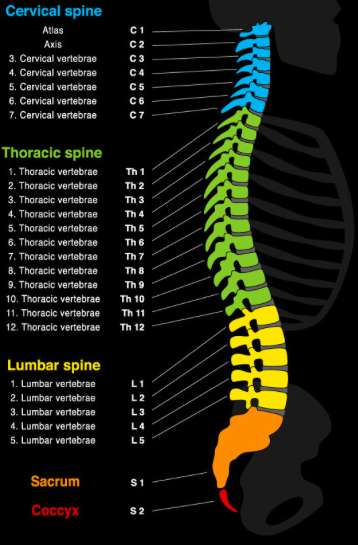What Are These Backbones, Anyway?
Each of us has likely referred to someone as “our backbone” at some point along the way, right? So in a sense, ingrained in our collective consciousness is an intuitive understanding of just how majorly important and supportive our backbones (aka the spinal column) are for the human body. This is the premise that we are starting from as we introduce a fun new blog series here at BACKBONES about… you guessed it…our BACKBONES! Too obvious?!? We think not!
Because…what are these backbones, really? How many of them do we even have? And furthermore, how does the whole spinal cord thing fit into the mix? The reality is that even if we have experienced injury or disease to our spinal column or spinal cord, medical jargon is downright confusing. So to start this series off right with the simplified scoop.
Our beautiful and fascinating spinal column:
The spinal column is made up of 33 individual bones (aka vertebrae) stacked on top of one another. Running down the middle of the spine, they are our main structural support and carry the weight of half (yes, half!) of our body. These bones support our ability to stand, bend, twist, and move (hopefully) with ease. Working with flexible joints (aka facets), tendons, muscles, and nerves, these backbones help to protect our oh-so-very important spinal cord from injury.
When we look at our back from a side view, we see that there is a gentle S curve, which is frankly a brilliant design in that, like a coil spring, it acts to absorb shock, maintain balance, and allow for range of motion.
Breaking down these 33 bones looks like this:
- The seven bones in our neck (C1-C7) are known as the cervical spine and they are in charge of supporting the weight of our about 10(ish) pound head.
- The 12 bones in the chest / mid back region (T1-T12) are known as the thoracic spine and they hold the rib cage and protect the heart and lungs.
- The 5 bones in the low back (L1-L5) are known as the lumbar spine. These backbones are much bigger because they have to absorb all of the stress that comes along with lifting and carrying heavy stuff.
- Below the lumbar spine are several vertebrae that are fused together. They are collectively known as the sacrum. The sacrum connects the spine to the hips bones. Combined, they form the pelvic girdle.
- Below the sacrum is what we call our tailbone (aka coccyx). The tailbone attaches ligaments and muscles to our pelvic floor.
So those are our backbones, but what about that spinal cord?
Think of the spinal cord as an information super highway. It is about as thick as your thumb and runs 18(ish) inches long within a protective canal from way up in your brainstem all the way down to your 1st lumbar vertebrae. Even beyond that, the cord separates and continues all the way down to your feet.
The short story is that the brain sends important messages to our limbs and body that tells them to move. The limbs also send messages back to the brain about what we feel and touch. All of this communication happens via the spinal cord. And while this is where it gets a little bit complex, the main point is that any damage to your spinal cord can result in a loss of sensory and motor function below the level of the injury. This is why people who obtain an injury to the spinal cord may have a change in sensation or movement below the level of their injury. This may be severe enough to cause paralysis.
There are approximately 250,000 new traumatic spinal cord injuries each year and 80% of us Americans will experience back pain at some point in our lives. For some, this back pain can lead to disability or a reduction in our quality of life. BACKBONES wants to help, so please stay tuned for the next article in our series – Demystifying Acupuncture. Already feeling skeptical? Stick around to hear the facts (and maybe a little woo-woo stuff too) from an actual licensed acupuncturist.

Andrea Peruzzi lives in Portland, OR with her spouse, Riley, who happens to be quadriplegic. She documents their inter-abled love adventures, and other disability and access topics on her blog, Poor House Love. Andrea is a trained acupuncturist and loves to write about health and wellness.



